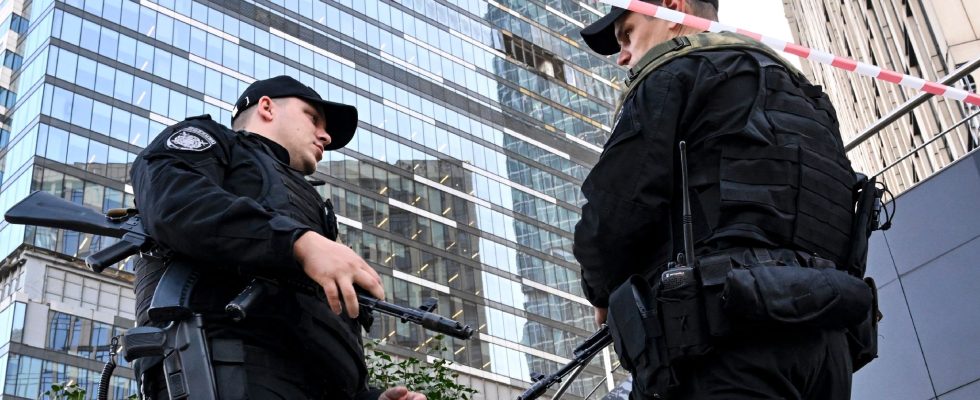The scene would become almost banal in the Russian capital. “Last night, in the urban district of Ramensky, the air defense forces foiled an attempted drone attack on Moscow,” said its mayor, Sergei Sobyanin, on September 7. Two days earlier, several devices had already been destroyed above his city, as well as in the Tver region (northwest of Moscow). In the capital, as in Crimea or in the Russian areas bordering Ukraine, Kiev’s forces have increased the number of drone shipments in recent weeks, at an almost daily rate, on the sidelines of their counter-offensive that began in the month of June.
The Ukrainian authorities announced the color at the end of July. “Little by little, the war returns to the territory of Russia […] and it is a natural and just inevitable process”, warned Volodymyr Zelensky. But unlike the intensive and murderous shelling of Ukrainian civilians by Moscow – as evidenced by the terrible bombing against the Kostiantynivka market on September 6, having killed at least 16 people – Kiev’s strikes have caused few victims among the Russian population so far, targeting primarily symbolic or military objectives.
“Psychological Weapon”
“These strikes are first used as a psychological weapon against the Russians, observes General Dominique Trinquand, military expert and former head of the French mission to the UN. The objective is to remind them that they do not live in a bubble and that this war can also concern them on their own territory.” And to inflict, thereby, one more snub on Vladimir Putin. In Moscow, the strikes were mainly focused on the business center, or the prestigious Rublyovka district, to the west of the city, where many officials and members of the Russian elite reside. This targeting of the Russian capital has also led, on multiple occasions in recent weeks, to the closure of airspace above Moscow, leading to delays and cancellation of flights.
“The increase in strikes corresponds to the increase in Ukraine’s drone production capacity,” notes General Trinquand. Among the most used models: the Beaver (or Bober in Ukrainian), a kamikaze drone developed in 2022, thanks to fundraising launched at the request of Ukrainian intelligence. Able to reach a speed of 150 to 200 km/h, it is capable of transporting a load of around twenty kilos of explosives up to 1000 km. “This can be interesting for destroying Russian logistics and in particular ammunition or fuel depots which can go up in smoke very quickly,” notes Xavier Tytelman, former military aviator and aeronautical expert.
Military effects
In its range, Ukraine also has Corvo drones made partly of… cardboard. This model is notably suspected of having been used in the attack against the Kursk airfield at the end of August, during which the Ukrainians claimed responsibility for the destruction of four Su-30 combat planes and a MiG-29, in addition to systems air defense. Made in Australia, these machines are capable of transporting a load of 5kg over a distance of 120 kilometers – enough to hit the town of Belgorod located around forty kilometers from the Ukrainian border. And with their unit price of between $670 and $3,300, depending on the version, they constitute an inexpensive way to strike from a distance.
This recent acceleration in the number of drone strikes is having effects on the battlefield. “Strategically, this forces the Russians to repatriate part of their air defense system from the front in order to ensure the protection of their territory: which de facto contributes to undressing part of the forces engaged on the Ukrainian front, underlines Xavier Tytelman. It also requires the Russians to move their air bases further away, to prevent their planes from being targeted.”
Especially since aerial drones are not the only ones used by Ukrainian forces. At the same time, attacks with naval drones against the Russian fleet in the Black Sea have also increased. On August 4, several devices targeted the Novorossiysk naval base, damaging a military ship, as well as an oil tanker located further west, at the Kerch Strait. “This constitutes a significant threat to Russian boats,” points out General Trinquand. “Ultimately, this limits Russian strike capabilities from the sea, because they can no longer get as close as before to the Ukrainian coast.” Ukraine also unveiled at the end of April a prototype underwater drone called Toloka TLK-150, which could theoretically travel 100 kilometers with 50 kg of explosives. The drone war is here to stay.
